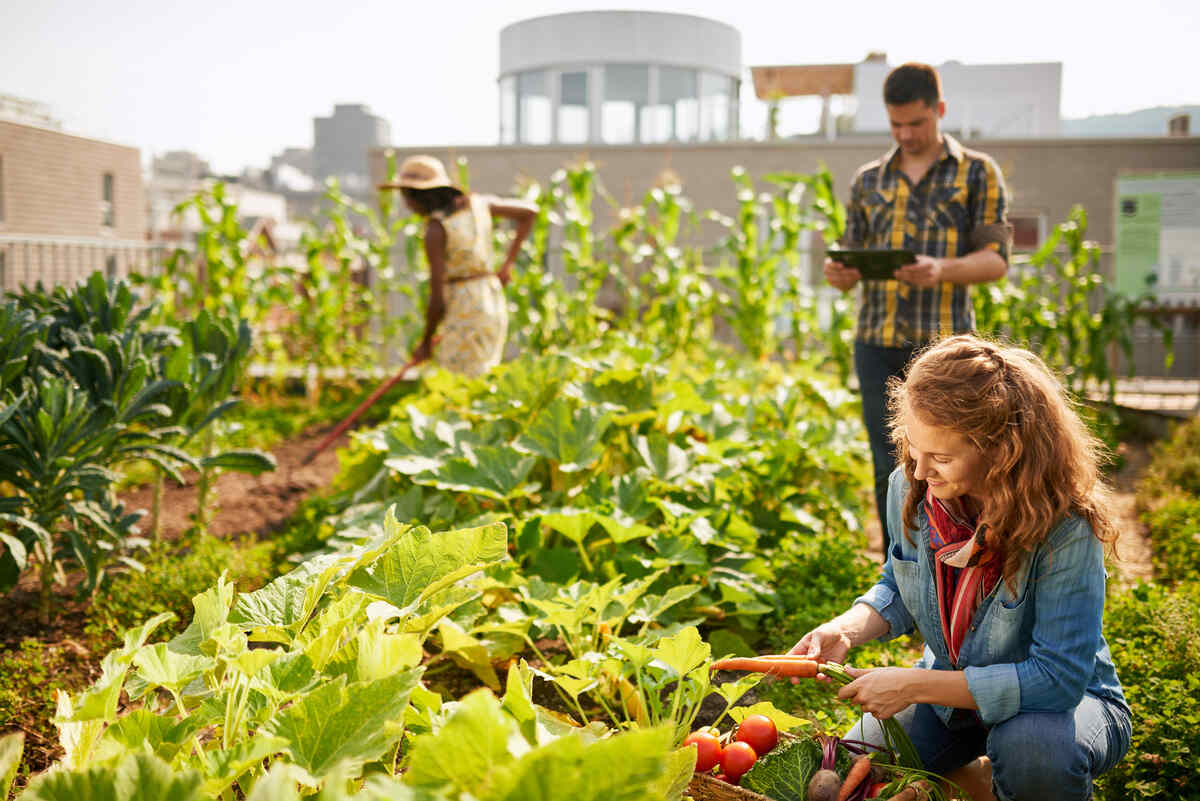Excitement About City Blooming
Fascinated in expanding food for sale in the City of Chicago? Below is a list of frequently asked questions regarding the regulations and guidelines that cultivators must consider when planning a city farming task.
The zoning modification does not change any kind of other codes dealing with composting, building authorizations, acquiring or renting City owned property, company licenses or environmental contamination. There are existing codes that manage these concerns and they continue to be in complete impact and may apply to your task. Area yards are usually possessed or managed by public entities, civic companies or community-based companies and maintained by volunteers.
Urban farms grow food that is intended to be offered, either on a nonprofit or for-profit basis. Because of their business function, metropolitan farms call for a business certificate. Yes. A neighborhood yard is permitted to market excess generate that was expanded on site if the sales are accessory or secondary to the yard's main objective defined above.
How City Blooming can Save You Time, Stress, and Money.
Composting is allowed however only for plant product that is created and made use of on site. The quantity of compost product can not exceed 25 cubic lawns at any type of given time according to the requirements in 7-28-715 of the City's Municipal Code. Yes. Since the dirt at a lot of brand-new yard websites needs amending, garden compost, dirt, timber chips, or other materials can be gotten to construct or improve the expanding area - balcony and patio garden design.

If a building permit is required after that the hoophouse will certainly be thought about an accessory structure. You can discover even more about the building authorization requirements by calling the Department of Structures. The 25,000-square-foot size restriction is intended to stop a solitary community yard from dominating an offered block or diminishing the block's existing household or business personality.
The limit does not use to yards located in Public Open Area (POS) areas. Can there be even more their explanation than one area garden that is 25,000 square feet on a single block? Secure fencing is not required, nonetheless, gardens that have big car park locations might be called for to install fence or other landscaping functions.
City Blooming Fundamentals Explained
B1 & B2 districts require that all industrial use tasks be performed inside. Is fence needed for urban ranches? Fences might be needed, along with landscape design and screening, for particular parking locations and exterior job or storage space areas depending on location and the certain activity taking place.
Urban ranches require building permits and zoning authorizations prior to construction (indoor plants). Other kinds of city evaluation may be required depending on specific structures, activities, dimension, landscape design, licensing, public heath and stormwater administration problems.
Yes. The sort of certificate is identified by what is taking place at the site. The Department of Organization Affairs and Consumer Defense can help identify the specific kind of organization permit that's called for. Yes. Off road auto parking is required for many business jobs in Chicago. The called for number of car parking rooms is based on the variety of employees servicing site and not the square video of the expanding room.
Not known Details About City Blooming

An urban ranch can market garden compost material created on site, however, the operation needs to comply with the laws in 7-28-715 of the Chicago Municipal Code. Aquaponic systems are enabled indoors on metropolitan farms in many zoning districts.
Up to five hives or colonies of honey bees may be kept as an accessory use. Nonetheless, beekeepers should register with the Illinois Department of Agriculture. To find out more concerning the proposed zoning change you may contact the Department of Real Estate and Economic Development, Bureau of Planning and Zoning at 312.744.8563.
, which takes location in rural locations at the side of suburban areas.
A Biased View of City Blooming
It can include an activity of natural growers, "foodies" and "locavores", that look for to develop social networks based on a common principles of nature and neighborhood holism. These networks can create using official institutional assistance, coming to be incorporated right into regional town preparation as a "change town" movement for sustainable city growth.
Some of the very first proof of urban agriculture comes from Mesopotamia.
Comments on “City Blooming Fundamentals Explained”